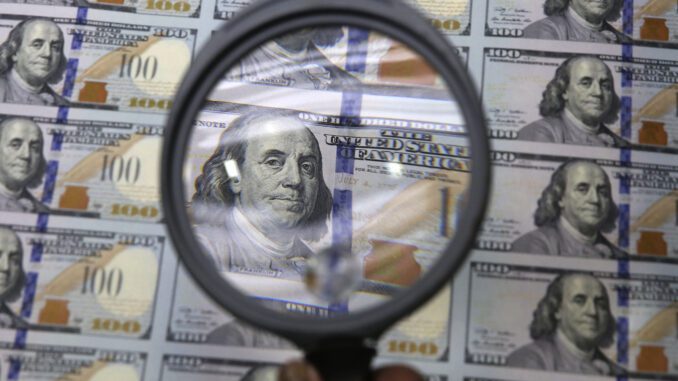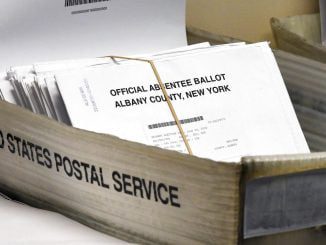
WASHINGTON, D.C. — An Associated Press analysis has found that fraudsters potentially stole more than $280 billion in COVID-19 relief funding; another $123 billion was wasted or misspent. Combined, the loss represents 10% of the $4.2 trillion the U.S. government has so far disbursed in COVID relief aid.
That number is certain to grow as investigators dig deeper into thousands of potential schemes.
Investigators and outside experts say the government, in seeking to quickly spend trillions in relief aid, conducted too little oversight during the pandemic’s early stages and instituted too few restrictions on applicants. In short, they say, the grift was just way too easy.
“Here was this sort of endless pot of money that anyone could access,” said Dan Fruchter, chief of the fraud and white-collar crime unit at the U.S. Attorney’s office in the Eastern District of Washington. “Folks kind of fooled themselves into thinking that it was a socially acceptable thing to do, even though it wasn’t legal.”
The U.S. government has charged more than 2,230 defendants with pandemic-related fraud crimes and is conducting thousands of investigations.
Most of the looted money was swiped from three large pandemic-relief initiatives designed to help small businesses and unemployed workers survive the economic upheaval caused by the pandemic.
Michael Horowitz, the U.S. Justice Department inspector general who chairs the federal Pandemic Response Accountability Committee, told Congress the fraud is “clearly in the tens of billions of dollars” and may eventually exceed $100 billion.
“I’m hesitant to get too far out on how much it is,” he said. “But clearly it’s substantial and the final accounting is still at least a couple of years away.”
Before leaving office, former President Donald Trump approved emergency aid measures totaling $3.2 trillion, according to figures from the Pandemic Response Accountability Committee. Biden’s 2021 American Rescue Plan authorized the spending of another $1.9 trillion. About a fifth of the $5.2 trillion has yet to be paid out, according to the committee’s most recent accounting.
Never has so much federal emergency aid been injected into the U.S. economy so quickly. “The largest rescue package in American history,” U.S. Comptroller General Gene Dodaro told Congress.
The enormous scale of that package has obscured multibillion-dollar mistakes.
An $837 billion IRS program, for example, succeeded 99% of the time in getting economic stimulus checks to the proper taxpayers, according to the tax agency. Nevertheless, that 1% failure rate translated into nearly $8 billion going to “ineligible individuals,” a Treasury Department inspector general told AP.
The health crisis thrust the Small Business Administration, an agency that typically gets little attention, into an unprecedented role. In the seven decades before the pandemic struck, for example, the SBA had doled out $67 billion in disaster loans.
When the pandemic struck, the agency was assigned to manage two massive relief efforts — the COVID-19 Economic Injury Disaster Loan and Paycheck Protection programs, which would swell to more than a trillion dollars. Between March 2020 and the end of July 2020, the agency granted 3.2 million COVID-19 economic injury disaster loans totaling $169 billion, while at the same time implementing the huge new Paycheck Protection Program.
In the haste, guardrails to protect federal money were dropped. Prospective borrowers were allowed to “self-certify” that their loan applications were true. The CARES Act also barred SBA from looking at tax return transcripts that could have weeded out shady or undeserving applicants, a decision eventually reversed at the end of 2020.
“If you open up the bank window and say, give me your application and just promise me you really are who you say you are, you attract a lot of fraudsters and that’s what happened here,” Horowitz said.
The SBA inspector general’s office has estimated fraud in the COVID-19 economic injury disaster loan program at $86 billion and the Paycheck Protection program at $20 billion. The watchdog is expected in coming weeks to release revised loss figures that are likely to be much higher.
SBA Inspector General Hannibal “Mike” Ware and his staff are overwhelmed with pandemic-related audits and investigations. The office has a backlog of more than 80,000 actionable leads, close to a 100 years’ worth of work.
Horowitz criticized the government’s failure to use the “Do Not Pay” Treasury Department database, designed to keep government money from going to debarred contractors, fugitives, felons or people convicted of tax fraud. Those reviews, he said, could have been done quickly.
Han Nguyen, a spokesman for the SBA, said Monday that “the vast majority of the likely fraud originated in the first nine months of the pandemic programs.” For the COVID-19 economic injury disaster loan program, Nguyen said, SBA’s “working estimate” found $28 billion in likely fraud.
Fraud in pandemic unemployment assistance programs stands at $76 billion, according to congressional testimony from Labor Department Inspector General Larry Turner. That’s a conservative estimate. Another $115 billion mistakenly went to people who should not have received the benefits, according to his testimony.
Turner’s task in identifying all of the pandemic unemployment insurance fraud has been complicated by a lack of cooperation from the federal Bureau of Prisons, according to a September “alert memo” issued by his office. Scam artists used Social Security numbers of federal prisoners to steal millions of dollars in benefits.
Hospitalizations for the virus have steadily declined, according to CDC data, and Biden in April ended the national emergency to respond to the pandemic.
But on politically divided Capitol Hill, lawmakers have not put the pandemic behind them and are engaged in a fierce debate over the success of the relief spending and who’s to blame for the theft.
Too much government money, Republicans argue, breeds fraud, waste and inflation. Democrats have countered that all the financial muscle from Washington saved lives, businesses and jobs.
Republicans and Democrats did, however, find common ground last year on bills to give the federal government more time to catch fraudsters. Biden in August signed legislation to increase the statute of limitations from five to 10 years on crimes involving the two major programs managed by the SBA.
The extra time will help federal prosecutors untangle pandemic fraud cases, which often involve identity theft and crooks overseas. But there’s no guarantee they’ll catch everyone who jumped at the chance for an easy payday. They’re busy, too, with crimes unrelated to pandemic relief funds.
“Do we have enough cases and leads that we could be doing them in 2030? We absolutely could,” said Fruchter, the federal prosecutor in the Eastern District of Washington. “But my experience tells me that likely there will be other priorities that will come up and will need to be addressed. And unfortunately, in our office, we don’t have a dedicated pandemic fraud unit.”



